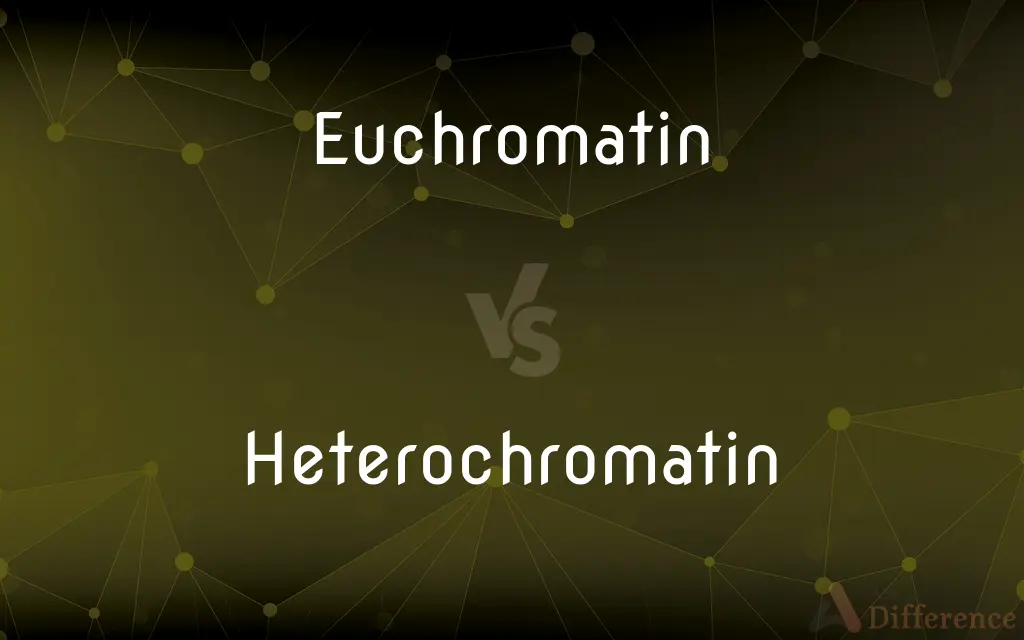Euchromatin vs. Heterochromatin — What's the Difference?

Difference Between Euchromatin and Heterochromatin
ADVERTISEMENT
Compare with Definitions
Euchromatin
Euchromatin is a lightly packed form of chromatin (DNA, RNA, and protein) that is enriched in genes, and is often (but not always) under active transcription. Euchromatin comprises the most active portion of the genome within the cell nucleus.
Heterochromatin
Heterochromatin is a tightly packed form of DNA or condensed DNA, which comes in multiple varieties. These varieties lie on a continuum between the two extremes of constitutive heterochromatin and facultative heterochromatin.
Euchromatin
Chromosomal material that is genetically active and stains lightly with basic dyes.
Heterochromatin
Tightly coiled chromosomal material that stains deeply during interphase and is believed to be genetically inactive.
Euchromatin
(genetics) uncoiled dispersed threads of chromosomal material that occurs during interphase; it stains lightly with basic dyes
ADVERTISEMENT
Heterochromatin
(cytology) Heterochromatic tightly coiled chromosome material; believed to be genetically inactive
Share Your Discovery

Previous Comparison
Lion vs. Lioness
Next Comparison
Agar vs. Agarose














































